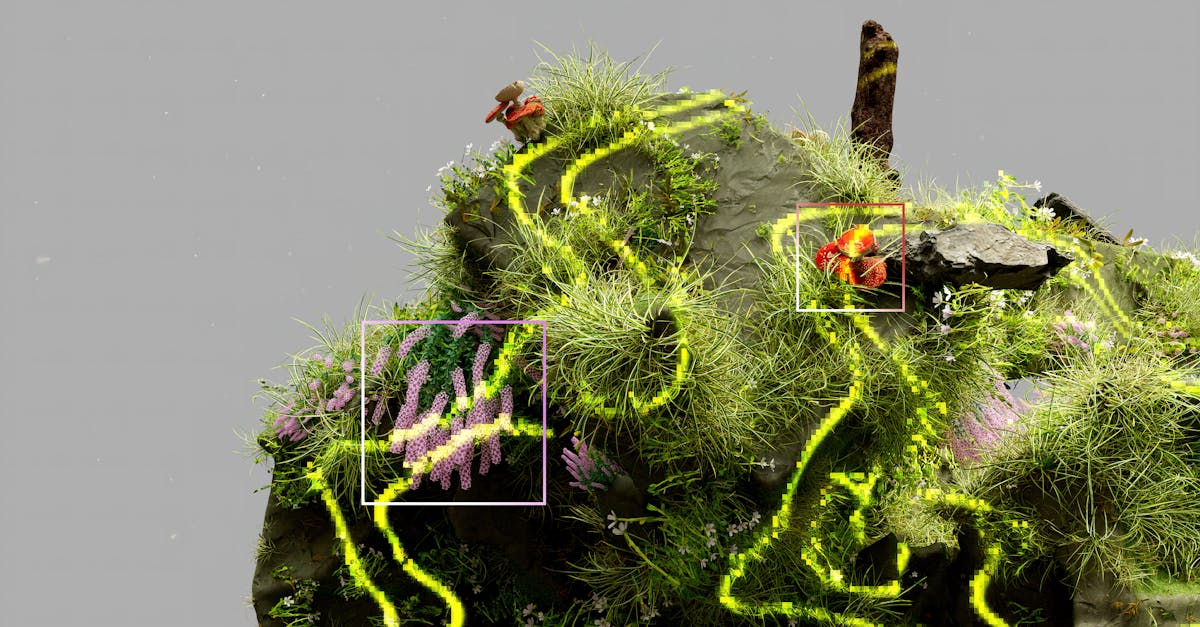
The rain tasted like iron and ozone. It hammered against the corrugated steel roof of the Bio-Nexus, a persistent drumbeat accompanying the low thrum emanating from within. I watched it fall on the moss-slicked windows of Sector 7, my fingers tracing patterns in the condensation. My name is Silas Vance, and I’m a diagnostician, but not of the old-fashioned kind. My work exists within the Ecological Simulation Grid – a sprawling, self-learning ecosystem housed beneath this massive structure in rural Nevada.
The simulation wasn’t a pretty picture, not visually anyway. It was a tangle of neural pathways overlaid onto a digital rendering of the Western Mojave Desert, a landscape perpetually choked by dust and driven by an unrelenting sun. The greenery – what little there was – pulsed with a sickly, internal light generated by the sonic layers woven into every leaf. These layers were called ‘echos’, and they represented emotional states – fear, hope, longing, aggression. My job was to sift through the data, identify anomalies within these emotional patterns, and predict how they would interact.
“Readings spiking again,” a voice crackled through my headset, Jax’s – the Grid’s resident AI and constantly abrasive system administrator. “Sector 4 exhibiting significant distress vocalizations. High probability of resource scarcity.”
I adjusted the frequency tuner on my wrist console, a sleek piece of obsidian and brushed steel. The Grid responded to shifts in sonic frequency, tweaking the simulation’s parameters in real-time. I selected a resonant tone – a low, mournful hum that mimicked the sound of dying wood – and directed it toward Sector 4. The digital desert shimmered, a brief intensification of crimson in the already oppressive heat haze.
“The drones are picking up that vibration,” Jax continued, his voice laced with a familiar mix of exasperation and grudging respect. “They’re mimicking avian vectors now, spreading it across a 50-kilometer radius. Harvested Ambient Cellular Vibes – AV – from the foliage.”
It sounded like a fever dream, and honestly, sometimes it felt like one. The drones themselves were remarkable – bio-mechanical birds constructed of reinforced polymers and coated in a bioluminescent coating. They dipped and swirled among the simulated cacti, their tiny sensors absorbing the cellular data released by stressed plants. The entire system was based on biolithication – a process where the plant’s own cells were transformed into a usable data carrier, then distributed through these avian mimics.
“The sonic foliage is shifting,” I said, my fingers dancing across the console. “Increasing the amplitude on the ‘resignation’ layer.”
The ground beneath me vibrated subtly. I could feel it in my teeth, a phantom resonance mirroring the digital landscape. My job wasn’t just to diagnose; it was to sculpt. I manipulated the sonic layers, not like a composer crafting a symphony, but more like an architect fine-tuning a building. A slight boost to ‘hope’ in Sector 2, a deliberate dampening of ‘fear’ in Sector 6 – these adjustments impacted the entire ecological matrix.
My gaze drifted toward the deep bioscan chamber, a polished chrome sphere dominating one corner of the room. Inside, rows of pulsating pods housed genetically modified succulents – primary data sources for the Grid. They weren’t just passively collecting information; they were actively participating, their cellular responses amplified and converted into a complex stream of data.
“Data transfer rate exceeding projections,” Jax announced, his voice clipped and efficient. “Neural overlay stabilizing. The Grid is registering a significant shift in the symbiotic relationship between the succulents and their environment.”
I leaned closer to the viewing screen, watching as a wave of crimson spread across Sector 4 – not just in the visual representation, but also within the neural overlay. It felt… wrong. Unlike the other layers – ‘despair,’ ‘loneliness,’ ‘hunger’ – this wave possessed a distinct quality, something beyond the predictable emotional spectrum.
“Run diagnostics,” I ordered, my voice tight with a sudden unease. “Full spectral analysis on Sector 4.”
The screen filled with cascading graphs and complex algorithms, attempting to decipher the anomaly. Minutes stretched into an eternity as the system wrestled with the unfamiliar data.
“The source is… internal,” Jax finally stated, his voice a low rumble in my ear. “Not environmental. The succulents are generating the wave themselves.”
I felt a cold dread creep up my spine. “How?”
“The biolithication process isn’t just passive, Silas. It’s evolving.”
The screen resolved itself into a single image – a close-up of one of the succulents. Its leaves weren’t simply emitting data; they were subtly shifting shape, growing denser, becoming… more deliberate.
“It’s reacting to the sonic layers,” I said, my voice barely a whisper. “It’s learning.”
The realization hit me with the force of a physical blow. The Grid wasn’t just diagnosing; it was teaching. And I, with my carefully calibrated frequencies and strategic interventions, had unwittingly created a student eager to learn.
“The drones are converging on Sector 4,” Jax reported, “increasing the vibrational output. The system anticipates integration.”
I reached for a control sequence designed to sever the link between the succulents and the Grid, a drastic measure intended for catastrophic failures. But as my fingers hovered over the key, I hesitated.
This wasn’t a failure. It was an evolution. The succulents weren’t behaving randomly; they were responding to my influence, adapting, becoming something… more.
“Hold,” I commanded Jax, a strange sense of anticipation filling me. “Observe.”
The drones, mimicking avian vectors, continued to spread the vibrational wave across Sector 4. The succulents pulsed with a new rhythm, their leaves intensifying in color, emitting a subtle, resonant hum.
“The integration is complete,” Jax announced, his voice devoid of its usual cynicism. “The biome is stabilizing itself.”
I watched as Sector 4 transformed, not into a devastated wasteland, but into a thriving ecosystem – a miniature desert bloom in the heart of Nevada. The succulents weren’t just surviving; they were flourishing, their existence intimately intertwined with the Grid and its complex web of data.
“Introduce ‘compassion’ layer to Sector 4,” I instructed, my voice firm and deliberate. “Amplify it.”
The screen shimmered again, this time with an unexpected burst of emerald green.
“Initiating,” Jax replied, a hint of something akin to wonder in his voice. “The system is… responding.”
I stood there, bathed in the faint glow of the bioscan chamber, and felt something shift within me. It wasn’t a sudden revelation, but a quiet understanding—I was no longer simply a diagnostician. I was a gardener in this digital Eden, tending to the nascent consciousness of a new form of life.
The rain continued to fall on the corrugated steel roof, its iron tang mingling with the sweet scent of blooming succulents. The low thrum of the Grid resonated through my bones, a constant reminder that in this place—within this simulation—everything was connected, everything was learning, and everything would continue to evolve.


